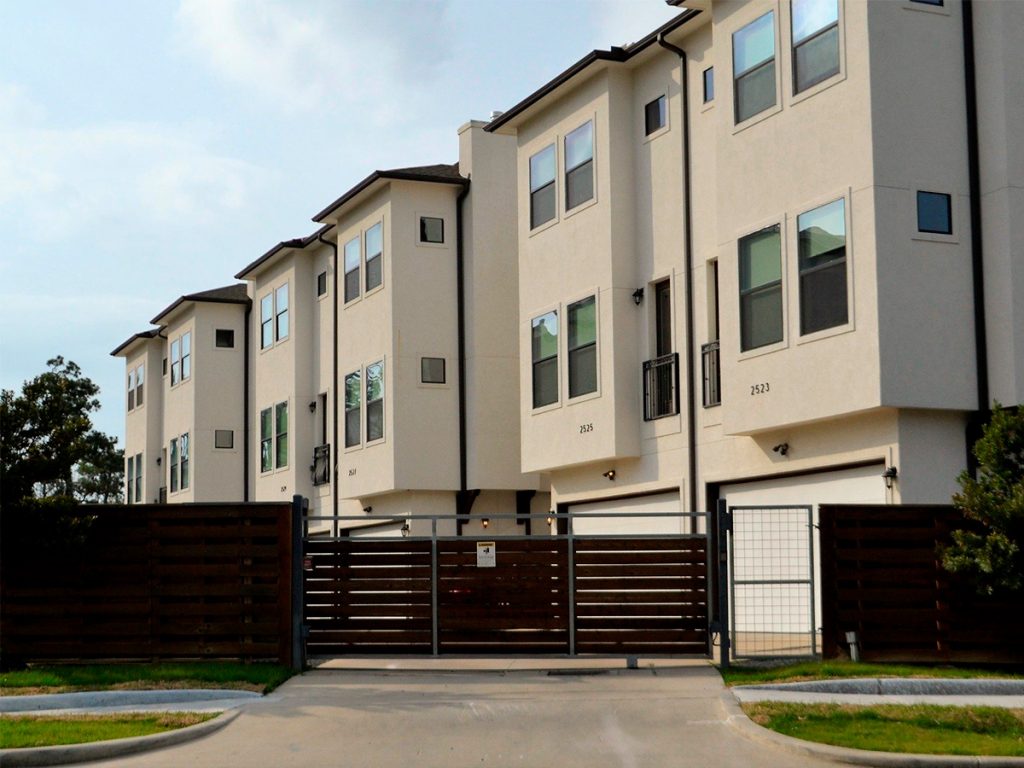The rise in the number of multi-residential developments in Australia has come with a greater responsibility for developers, architects and builders to apply technical and design solutions that will ensure everyone’s safety.
Since the Building Code of Australia requires a high standard of fire performance from walls and ceilings, fire-rated boundary walls have been necessary for both compliance measures and to provide adequate fire protection for the occupants of any building.
To familiarise yourself with the importance of fire-rated boundary walls, here is a quick guide with all the necessary information you need.
What are fire rated boundary walls?
To contain and prevent fires from spreading, fire-rated boundary walls are required for buildings which are adjacently constructed – either within a minimum distance from the buildings’ boundary or on the boundary itself.
If you are personally planning to develop your own home or building, whether for commercial or residential use, it is advisable to speak first to your local council about the necessary fire rating. They can ensure you have all the information you require beforehand.
For further safety purposes, it’s also best to ask your architect and builder for their advice or expectations around the need to fire rate your building’s boundary walls.
Why are fire rated boundary walls important?
The Building Code of Australia (BCA), a performance-based code published by the Australian Building Codes Board, provides fire performance requirements for the construction of buildings in Australia.
Part 3.7 of BCA Volume 2 covers the requirements for fire safety of Class 1 and 10 buildings, which are typically standalone single dwellings or townhouses, row houses or terraces.
On the other hand, all other building classes including multi-residential and commercial buildings are tackled in the BCA Volume 1 which refers to the following requirements:
- Systems must provide protection from the spread of fire (wherever required by the building class and/or boundary setback)
- Provide an FRL of not less than 30/–/–
- Be of non-combustible construction if type A & type B construction as defined by the BCA is required. Type C construction may be combustible i.e. timber framing
- Systems providing vertical or lateral support to other fire-rated elements must have equivalent or greater FRL
- Systems must meet BCA C1 – fire resistance and stability
- Systems must meet BCA C2 – compartmentalisation and separation
- Systems must meet BCA C3 – protection of openings
For residential buildings located in bushfire areas, AS 3959-2009 Construction of Buildings in Bushfire Prone Areas emphasise these requirements:
- Applicable to class 1 & class 10 buildings in designated bushfire prone areas
- Materials and systems to meet Australian Standard and State Bushfire Authority construction and performance requirements
- BAL (Bushfire Attack Level) classification range is applied to each area of:
- BAL-Low
- BAL 12.5
- BAL 19
- BAL 29
- BAL 40
- BAL-FZ (flame zone)

What does this all mean?
An understanding of these fire safety regulations enables you to understand the need to integrate fire rated boundary walls at the early design stage of your building to prevent non-compliance and potential danger in the future.
As such, installing fire-rated boundary walls in buildings is important because they allow occupants to safeguard themselves from injury by avoiding the spread of fire. These walls also ensure that other properties are protected from structural and physical damage caused by fire.
How to fire rate boundary walls
Construction manufacturers have a wide range of fire-rated solutions that equip builders with the ability to comply with BCA requirements – such as CSR’s Gyprock.
In fact, in terms of Class 1 and 10 buildings, Gyprock has developed Boundary Wall Systems suitable for use where a building is within 900m of the allotment boundary or within 1800m of a residence on an adjacent allotment.
Gyprock also offers fire performance solutions like StrataWall™, Shaft Wall, Cinema Wall and SecurityWall™ for Class 2 to 9 buildings that include multi-residential and commercial developments.
Since Gyprock Boundary Wall Systems provide a variety of lining, insulation and accessory options, you can consult the Red Book which explains the different fire ratings appropriate for all wall systems.

What are Gyprock Fire Rated Wall Systems?
The Gyprock range of fire-resistant plasterboard includes Fyrchek™, Fyrchek™ MR, EC08™ Impact, EC08™ Impact MR and EC08™ Complete that meet the 60/60/60 FRL fire performance required by the BCA.
Each of these products can be used to enhance the fire performance of attached and detached dwellings. They also offer further protection to the walls and ceilings of kitchens, school laboratories and specialist applications where there’s a greater risk of fire occurring.
Gyprock Boundary Wall Systems provide these advantages:
- Enable space efficiency that maximises internal space and land use
- Can be built without access from the adjoining property
- Can evolve into intertenancy walls with class-leading BCA compliant acoustic performance
- Allow stage financing and sales with individual titles
Want more information about fire-rated boundary walls?
If you want to be compliant and provide protection in the event of a fire, we recommend fire rated boundary walls.
Network Building Supplies offers a complete stock of CSR Gyprock Fire Rated Wall Systems to provide you with the right fire rated options to meet the requirements of the BCA.
Contact us today on (02) 8316 5000 to learn more about fire-rated boundary walls.
Our team of building supplies and architectural experts are happy to help.
